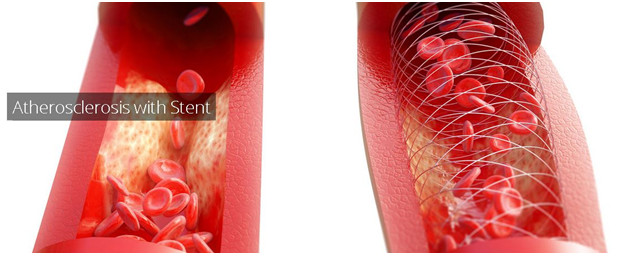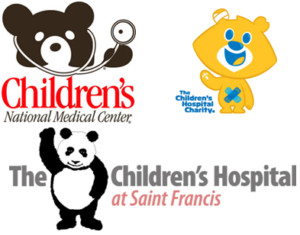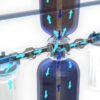
Every day, at Austin Visuals, we discover new ways to use 3D Medical Animation. 3D Animation is becoming more useful and common in healthcare communications by clinical practitioners for patients and colleagues. Medical Animation messaging is equally effective for court testimony, continuous medical/surgical, and scientific research. It is also useful for investor presentations, and new device introductions.
We have had the pleasure of working with:
- Bayer
- Abbott Laboratories
- Roche
- DuPont
- Pfizer
- Parke Davis
- Proctor & Gamble
- Astrazeneca
- Glaxo Smith Kline
- And many others
3D Medical Animation customers: And the patients, physicians, and other clinicians they serve are so important to Austin Visuals that we have established a dedicated website for the many projects we’ve created. You can see our work and a full list of those companies who have trusted us to convey their message at:https://medical3danimationcompany.com/ as well as on our home website: https://austinvisuals.com.
Why 3D Medical Animation?
3D medical animation has proved invaluable for explaining medical/surgical techniques and treatment protocols that cannot be replicated through live action or any traditional forms of media.
What have our videos have been used for?
Austin Visuals’ experienced artists have demonstrated the functions of research or pharmaceutical breakthroughs, new device innovations, clinical procedure improvements, and patient education processes with 3D Medical Animation.
In other words, our videos have been purposed or repurposed as evidence in legal proceedings, to seek investor support, FDA approval, for live presentations, trade shows, kiosks, websites, promotional emails, and for direct in-person sales of products and services.
Why use medical animations?
1) Introducing New Medical Products
The University of Texas turned to Austin Visuals to introduce and demonstrate their new, award winning, surgical device.
Scientists and engineers develop innovative devices, new healthcare products, treatment protocols, and services each year. Each of these need clinical trials, FDA or other approvals, then the help of investors and stakeholders to make it to market. As a result, medical professionals will have to be taught how to use them.
With the help of 3D Medical Device Animation, clinical education and training can occur across state lines, national boundaries, in teaching hospitals and physicians offices or directly to patients in their homes.
2) Provide Legal “Testimony”
3D Medical Animation is extremely effective in visualizing the extent of physical damage to people (as well as vehicles and other items) as a result of accident, injury, a disease process, medical/surgical errors, and more.
Austin Visuals creates accurate anatomical reproductions that can detail how a person might have been affected by a medication, a surgery, a treatment, or an accident.
By comparing “normal” anatomy to the anatomy that has incurred insult, jurors and judges can easily understand complex expert testimony that is so often confusing.
Austin Visuals’ forensically accurate 3D Medical Animation often results in cases being setting during arbitration.
https://medical3danimationcompany.com/work/
3) Explain Procedures
Any physician or member of a clinical surgical team will tell you that cameras in the operating theater cannot sufficiently capture a procedure to provide the best teaching and instruction.
Similarly, clinicians seeking to promote or explain new methods of treating medical patients in the physician’s office have neither the time to repeat the process over and over to colleagues or patients nor to reliably replicate situations to ensure consistent information sharing.
The most effective, efficient, and cost saving method to explain, teach, or share information that must be consistent and exacting in its communication is 3D Medical and Surgical Animation.
3D Surgical Animation of a new technique
4) Patient Educational Videos
Of course, the medical and surgical professionals and innovators aren’t the only ones who can benefit from 3D Medical Animation for education. Therefore patients and their families are helped immeasurably by seeing and gaining understand about how new treatments and interventions can aid and accelerate their recovery.
3D Medical Animation Patient Education Videos are also important to schools, fire stations, police officers, and others who want or need to learn important life saving techniques like CPR.
5) Calm Pediatric Patients
Being in the hospital is traumatic for adults. For kids it is even scarier. That is why many pediatric departments in general hospitals or dedicated children’s hospitals integrate teddy bears and other cuddly critters into their treatment plans.
Some Children’s Hospitals even use teddy bears as part of their branding.
What does that have to do with medical animation?
Medical Animation can teach and explain. It does so with a special compassionate approach directed to the youngest patients.
A child undergoing chemotherapy who can watch a 3D Animated video telling him or her what is happening. Similarly, the animation can tell stories using character such as a teddy bear or other friendly creatures. This allows the child to see something they know as safe. For instance, a 3D Animated surgical video featuring a teddy bear telling and showing the children everything is going to be all right and that someone cares.
Hospitals can use bears or other comforting creatures in animated videos to reassure children while letting them know what is going to happen during treatment. Here’s an example Austin Visuals did for Hallmark that could be adapted to healthcare:
6) Advertising and Promoting Physician Practices, new Surgical or Medical Services, and Medical Device Innovations
One of the most significant challenges to health care marketers is establishing a point of difference for their facilities or services in the highly regulated business of health care.
For instance, no one wants to buy what healthcare marketers are selling. They don’t want to buy, because no one wants to be ill. Yet, when someone has an accident, injury, suffer from a disease, their need is sudden and intense. Therefore, patients need to know where to go and who to consult.
Explainer videos, educational videos, and promotional videos can assist in marketing, and establishing a “brand” identity.
Because of this, offices are able to promote or introduce:
- Wellness and Prevention like flu vaccine programs
- Physician Practices with waiting room and online videos
- New surgical and medical services
- Opening of new departments
- Detailing General Awareness
- Telling Patient Stories (while adhering to HIPPA regulations)
3D Medical Animation is memorable. Since it is memorable, those Patient Education videos are well received by any age group. Surgery videos highlight new techniques.
7) Explain Scientific Research
When researchers reach toward the unknown to develop new cures or treatment, they must find funding. They offer proof of clinical trials, and convince clinicians to use their product once approval is reached. Once all of that is done, they set forth a clear point of difference to the marketplace, and make a profit.
3D Medical Animation can demonstrate how medicine works in the human body. Even at the molecular level, animation provides clear, consistent, accurate information to the public.
Written By: Nancy Schirm
[email protected]
[email protected]
FOR MORE INFORMATION CONTACT US AT AUSTIN VISUALS.
[email protected] [email protected]





